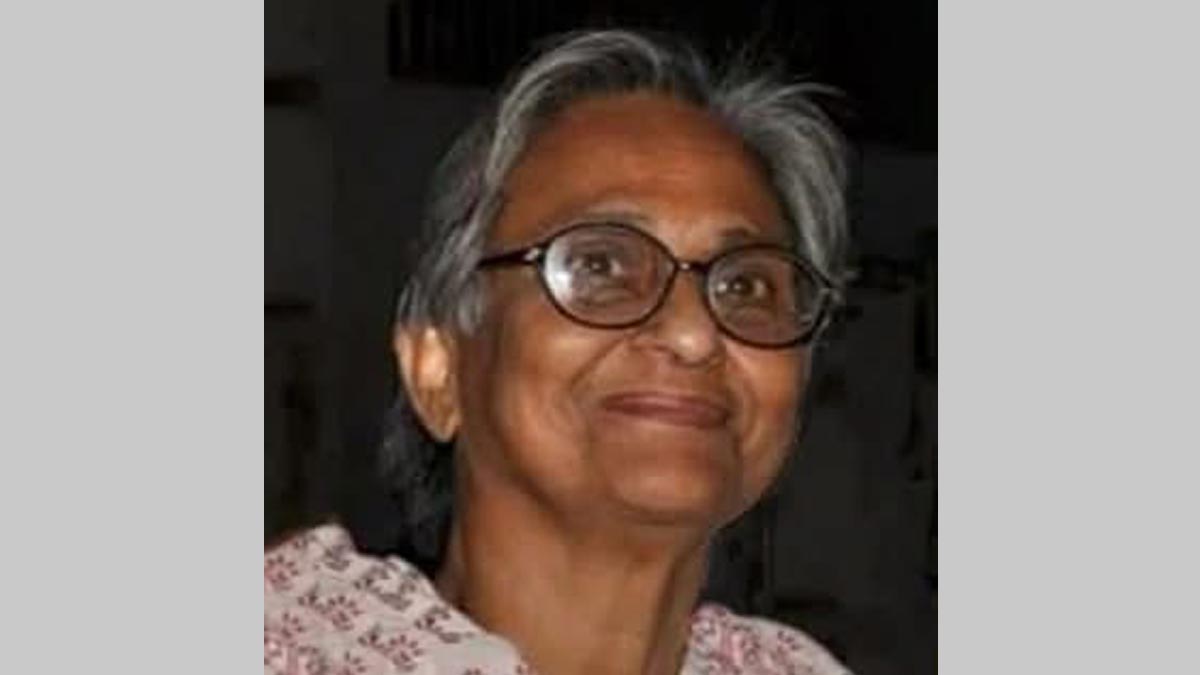Late last night, April 28, news came in of the demise of Uma di (Sanghamitra Gadekar) anti-nuclear activist, daughter of Narayan Desai (son of Gandhiji’s secretary Mahadev Desai) and life-partner of Surendra Gadekar, after a long illness. One of her siblings, brother Aflatoon is a senior political activist and senior member of the Samajwadi Jan Parishad (UP) living in Varanasi. Her other brother, Nachiketa Desai had passed away some years before.
Recalling her varied contributions, Aflatoon wrote on Meta-Facebook how Dr Sanghamitra worked with providing livelihood for the widowed Muslim women, survivors of the Gujarat 2002 carnage through sowing and dying cloth products with natural dyes. On the issue of nuclear energy Dr Sanghamitra Gadekar had made significant contributions working closely with her life partner Dr Surendra Gadekar on scientifically conducted surveys on the harmful impacts of nuclear energy and plants on health of those living in close proximity. Dr Sanghamitra was also involved as Medical Officer in Vasant Women’s University and also as a doctor at the Sanjeevani Hospital, Sarai Mohana, Varanasi.
Recalling her contribution to the peace movement on the sub-continent, film maker Anand Patwardhan recalled that Uma (Sanghamitra), Suren (dra) and Narayanbhai (Desai) featured in the 2002 film “War and Peace”. The global family of peace activists expressed condolences at her death.
In 2012, the partnership of the Gadekar’s had publicly challenged the decision of the International Atomic Energy Agency (IAEA), in Rajasthan after it gave a clean chit to the Rajasthan Atomic Power Plant (RAPP) in Rawatbhata, ignoring the fact that there was heavy tritium leak in unit 6 of the plant early this year.
That year, on June 23 this year, more than 40 persons working at unit 6 were exposed to tritium. On July 19, four maintenance workers were exposed to tritium radiation while repairing a faulty pipe in the pressurised heavy water reactor (PHWR) of unit 4, which the agency members visited during the “in-depth safety review” from October 29 to November 14. The IAEA assembled the Operational Safety Review Team (OSART), led by Miroslav Lipar of the agency’s Division of Nuclear Installation Safety, at the request of the Indian government. The team comprised experts from Canada, Belgium, Finland, Germany, Romania, Slovakia, Slovenia, Sweden and the IAEA.
However, an Independent health survey conducted around the RAPP by noted experts Sanghamitra Gadekar and Surendra Gadekar, had revealed to the contrary: the scientists and peace activists said it revealed high occurrence of cancer, leukaemia and other diseases.
“This study was published in a reputed and peer-reviewed medical journal but the Nuclear Power Corporation of India Limited (NPCIL) has ignored it,” the activists had alleged in a statement.
Related:
Anti-nuclear activist raise alarm over India’s ASAT missile testing
